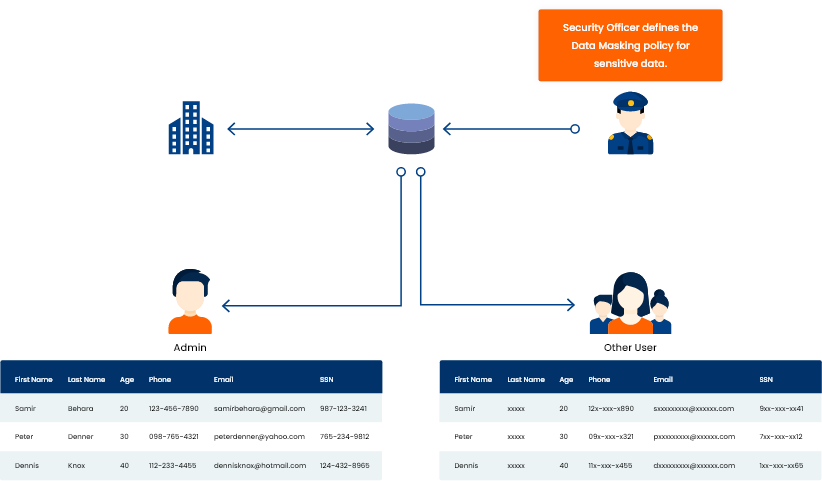
Dynamic data masking (DDM) limits sensitive data exposure by masking it to nonprivileged users. It can be used to greatly simplify the design and coding of security in your application.
Overview
Dynamic data masking helps prevent unauthorized access to sensitive data by enabling customers to specify how much sensitive data to reveal with minimal impact on the application layer. DDM can be configured on designated database fields to hide sensitive data in the result sets of queries. With DDM the data in the database is not changed. Dynamic data masking is easy to use with existing applications, since masking rules are applied in the query results. Many applications can mask sensitive data without modifying existing queries.
As an example, a call center support person may identify callers by several digits of their social security number or credit card number. Social security numbers or credit card numbers should not be fully exposed to the support person. A masking rule can be defined that masks all but the last four digits of any social security number or credit card number in the result set of any query. For another example, by using the appropriate data mask to protect personally identifiable information (PII) data, a developer can query production environments for troubleshooting purposes without violating compliance regulations.
The purpose of dynamic data masking is to limit exposure of sensitive data, preventing users who should not have access to the data from viewing it. Dynamic data masking does not aim to prevent database users from connecting directly to the database and running exhaustive queries that expose pieces of the sensitive data.
J-KMS Use Case


